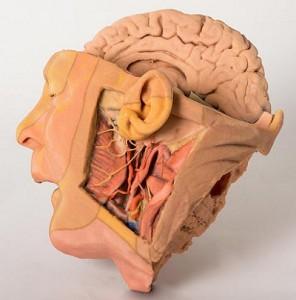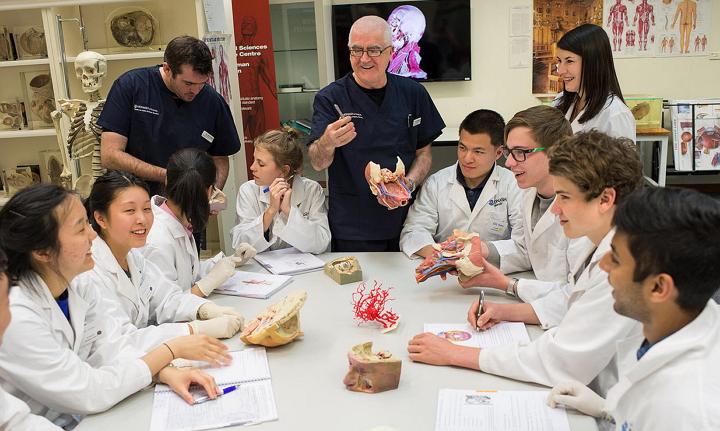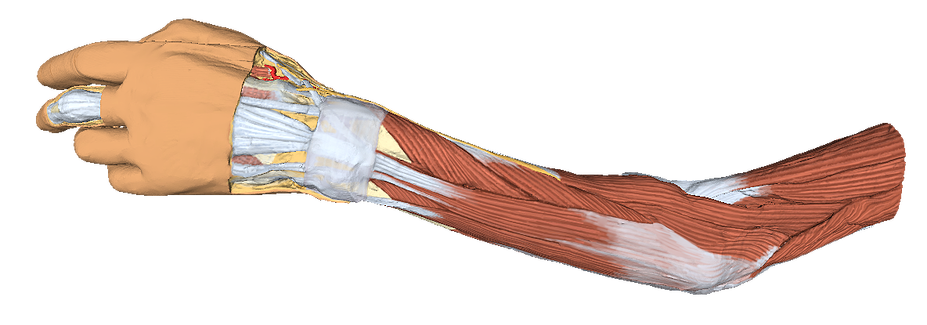Monash University scientists may well have changed the course of medical science with the release of their brilliant 3D Printed Anatomy Series. It’s a kit containing no actual human tissue, but it is an accurate and crucially important tool to teach students the intricacies of human anatomy.
The 3D printed anatomy kit–the result of a cooperative effort between researchers at the Australian university and German anatomical model maker Erler-Zimmer GmbH–first came to our attention last summer, and it’s now available for sale.
The team at the Monash University Centre for Human Anatomy Education produced this alternative to the cadaver, and Professor Paul McMenamin, the director of the Centre, says it will streamline what has been a complicated and expensive proce ss.
ss.
“For centuries cadavers bequested to medical schools have been used to teach students about human anatomy, a practice that continues today,” McMenamin says. “However many medical schools report either a shortage of cadavers, or find their handling and storage too expensive as a result of strict regulations governing where cadavers can be dissected.
“We believe our kit will revolutionise learning for medical students by enabling them to look inside the body and see the muscles, tendons, ligaments, and blood vessels. At the moment it can be incredibly hard for students to understand the three dimensional form of human anatomy, and we believe this kit will make a huge difference – a sort of 3D textbook if you like. “
Medical students have always relied on donated human cadavers to learn anatomy, but the use of properly preserved cadavers is prohibited in some countries and previous versions of plastic models could cost hundreds of thousands of dollars.
Now students will be able to take advantage of these anatomically correct, plastic 3D prints at the fraction of the cost of an embalmed or plastic-modeled replica of a human body. Plastination makes it possible to preserve individual tissues and organs, or even the entire body itself, but it is a time-consuming, complex, and expensive process. In order to make a specimen permanent, water and fats are removed from the tissue and replaced with polymers. Gunther von Hagens found a way to pull liquid polymer into each cell called “forced vacuum impregnation” where a specimen is placed in a vacuum chamber, but the process can take weeks to complete for an entire body.
These 3D prints of the human body have been fabricated from laser scans, MRI imaging, and CT scan data. The series also includes anatomically correct models which would be impossible to visualize in an embalmed body, parts like the vasculature of the brain. After scanning a real anatomical specimen, the body parts can be 3D printed either in a plaster-like powder or in plastic to result in a high resolution, and incredibly accurate, color reproduction.
Each of the 3D printed anatomical structures has been rigorously checked by the team of highly qualified anatomists at Monash, and since the prints aren’t made of actual human tissue, they aren’t subject to prohibitions for transportation, importation, or use in educational facilities without anatomy licensing. McMenamin says the 3D Printed Anatomy Series also avoids “ethical issues” which might be raised by the use of plastinated human remains.
Will these 3D printed anatomy kits one day replace the need for cadavers? Discuss in the 3D Printed Anatomy Kit forum thread on 3DPB.com.
—
Subscribe to Our Email Newsletter
Stay up-to-date on all the latest news from the 3D printing industry and receive information and offers from third party vendors.
You May Also Like
US Army Corps of Engineers Taps Lincoln Electric & Eaton for Largest 3D Printed US Civil Works Part
The Soo Locks sit on the US-Canadian border, enabling maritime travel between Lake Superior and Lake Huron, from which ships can reach the rest of the Great Lakes. Crafts carrying...
Construction 3D Printing CEO Reflects on Being Female in Construction
Natalie Wadley, CEO of ChangeMaker3D, could hear the words of her daughter sitting next to her resounding in her head. “Mum, MUM, you’ve won!” Wadley had just won the prestigious...
Blue Laser-powered M600 3D Printer Launched by Meltio
Founded in 2019 as a joint venture between Additec and Sicnova, metal 3D printer OEM Meltio develops and manufactures high-performance and easy-to-use metal 3D printing solutions that use its patented wire-laser metal...
3D Printed Storage Tanks Cut Material Costs by 25%
In a previous article, “Concrete Dreams: Let’s Print Money, Not Houses,” we discussed how the spotlight on 3D printing homes might be misplaced. Bollards, pedestrian bridges, and concrete tanks could...































